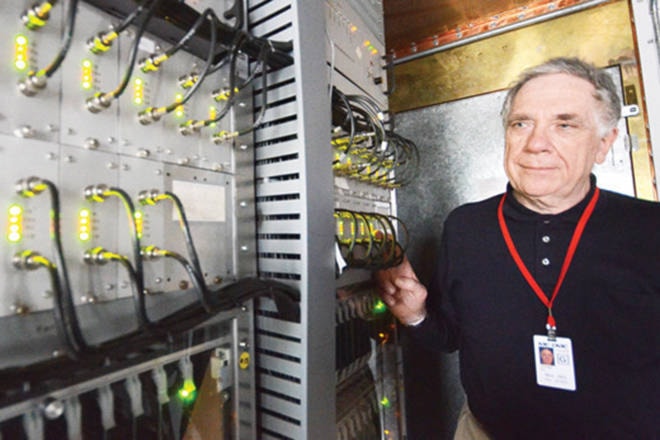NASA recently announced its intention to send a spacecraft far closer to the sun than we have ever achieved before.
It is intended to pass within six million kilometres of the solar surface, much closer than the planet Mercury, the planet nearest the sun, orbiting at a distance of about 50 million km. The levels of heat and radiation the spacecraft will experience will be about 600 times more intense than we experience here on Earth. It will be protected by a carbon-fibre composite radiation shield. Even so, it will have to survive temperatures between 1500 and 2000 degrees Celsius. The other problem is the amount of energy required to get the spacecraft close to the sun. To put the probe into a trajectory taking it that close to the sun the launcher will need to cancel out most of the speed at which the Earth and newly launched spacecraft are orbiting the sun, which is 30 km/s. To reach the International Space Station we only need a speed capability of about eight km/s. With all these technical challenges, why would we want so much to carry out this mission?
There are two reasons. Firstly the sun is the only star close enough for easy study. Understanding other stars starts with understanding the sun, and we are still a long way from that. For example, how can the sun’s atmosphere have a temperature of a million degrees when the surface of the sun, providing the heat, has a temperature of 6000 C? It is like putting a poker in the fire and having the part in the fire get red hot, but the handle, not in the fire, becoming white hot. There is some process going on that we know nothing about. Our hope is that actually going there and making measurements on the spot will help find out what.
Secondly, things happening in the solar corona can have huge effects on us — solar flares, explosions caused by overstressed magnetic fields in the corona — release millions of hydrogen bombs’ worth of energy and produce bursts of X-rays and beams of high-energy particles which can damage or destroy satellites, endanger astronauts, be a hazard for passengers on high-altitude flights, especially those on polar routes, and cause radio communication blackouts. There are big, magnetic loops in the solar corona, loaded with trapped, very hot gas. These can destabilize and catapult off into space at thousands of kilometres a second: solar tornadoes in the solar wind. If one of those hits the Earth we get magnetic storms. These can cause damage or failures of infrastructure, such as power outages, enhanced pipeline corrosion and problems with communication networks.
In 1989 a large flare and coronal ejection caused a massive power outage in Quebec and affected other systems in Canada and around the world. The total impact has been estimated to have been in the region of $2 billion. There was a much bigger event back in 1859, which if it had occurred in 1989, would have been a $2 trillion event. Even taking into account all we have learned since 1989, and the technical and operational improvements that have been implemented, our higher dependence on communications infrastructure, especially the Internet, makes us far more vulnerable now than we were back then.
This is why in Canada and other countries we have networks of devices on Earth and in orbit monitoring solar behaviour as part of an international “stethoscope on the sun.” However, monitoring solar X-rays, light and radio waves produced by processes in the solar corona is not the same as looking at those processes directly. We might be correctly interpreting what our monitoring programmes are telling us, or we might not: probably something in between. That is why we really need to go there for a closer look.
Jupiter lies in the southwest after sunset, with Saturn low in the southeast. Venus lies very low in the predawn glow. The moon will reach Last Quarter on June 17.
Ken Tapping is an astronomer with the NRC’s Dominion Radio Astrophysical Observatory, Penticton.



